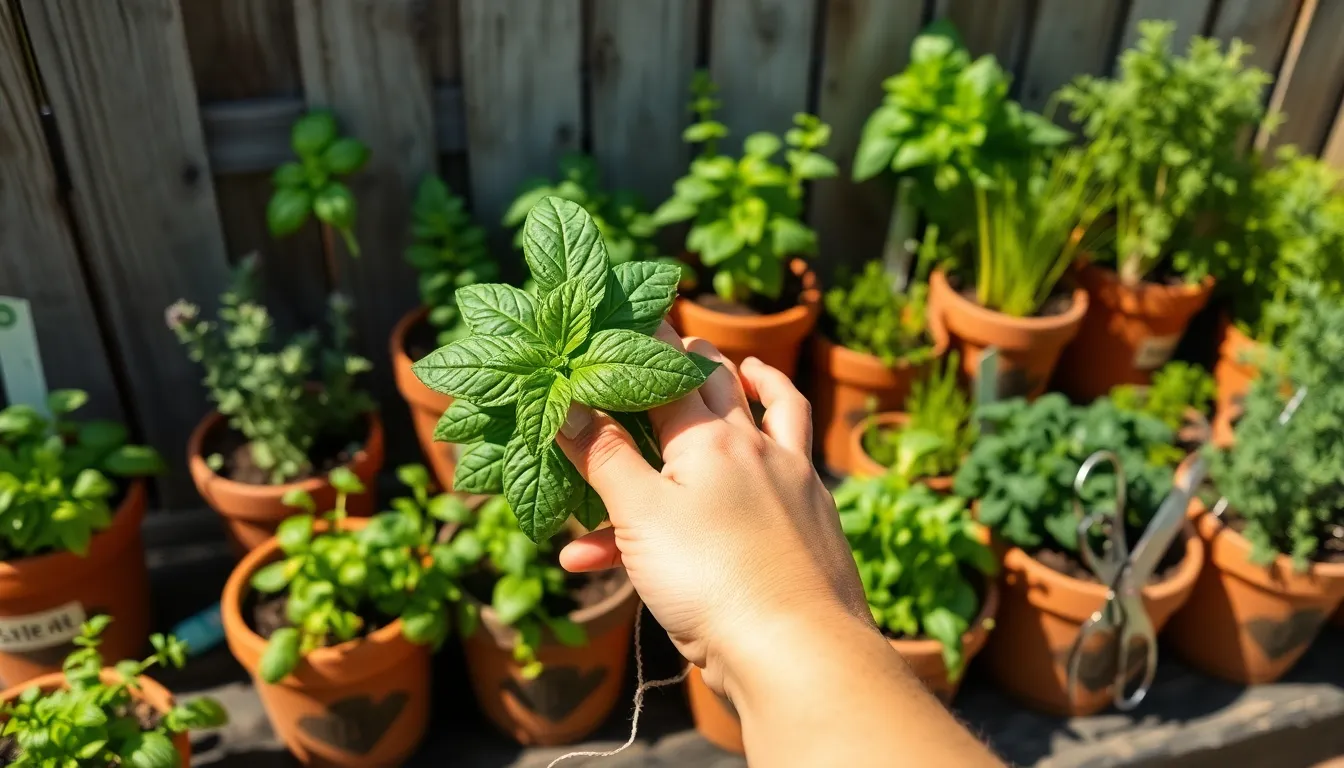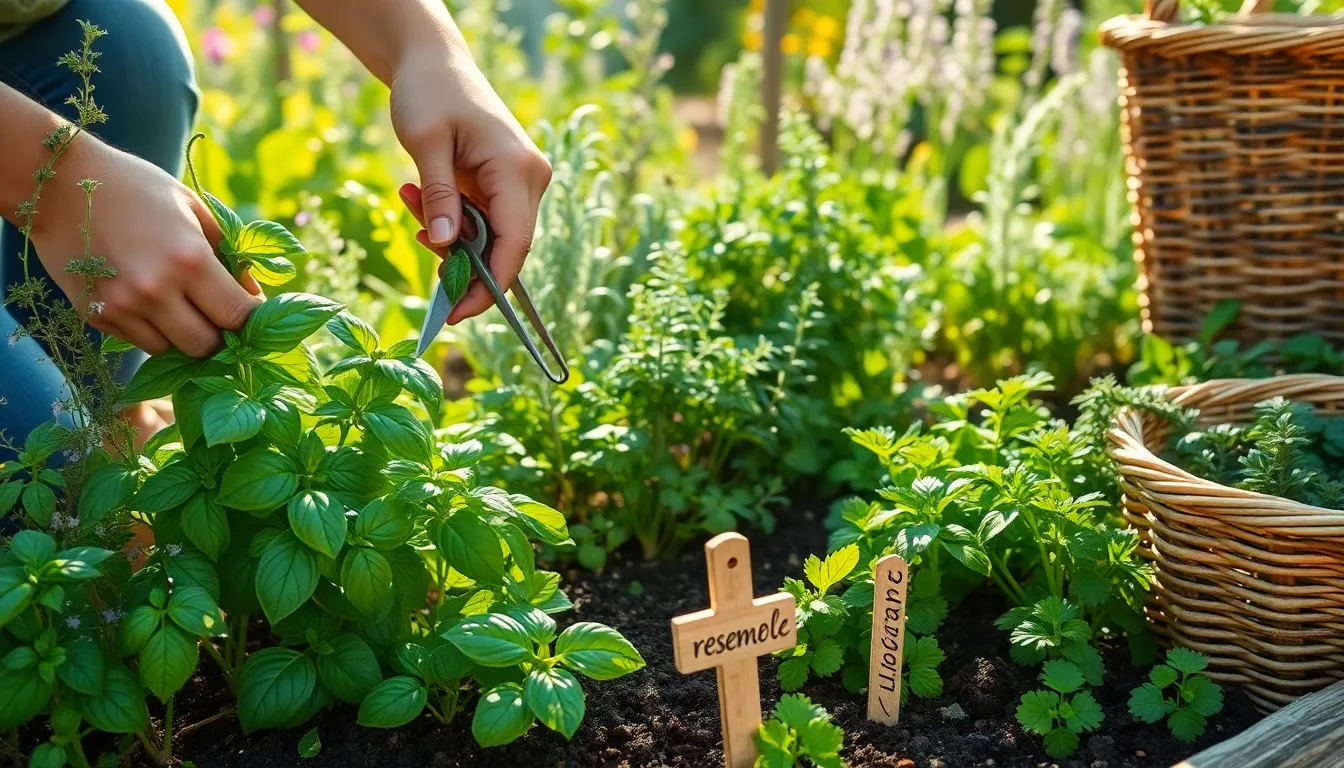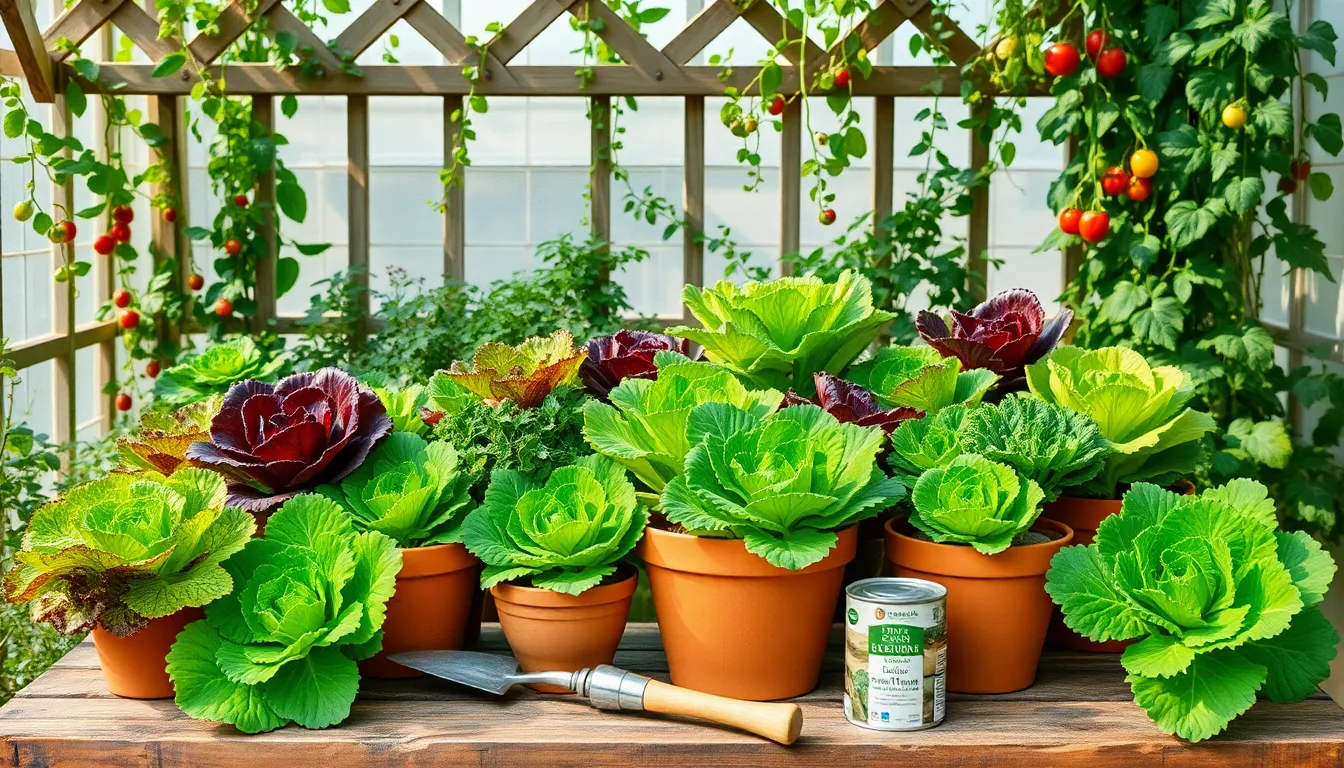For both budding gardeners and seasoned green thumbs, the joy of harvesting fresh herbs from your own garden is unparalleled. However, the delicate art of snipping your herbs without compromising the health of the plant can often feel daunting. Understanding how to harvest correctly is not only crucial for the longevity of your plants but also ensures a bountiful supply of fresh flavors for your kitchen.
In this guide, we’ll delve into the essentials of harvesting herbs in a way that’s gentle yet effective. You’ll discover techniques that range from the ideal time of day to pick your herbs to the specific methods of cutting that encourage new growth. Whether you’re growing a humble pot of basil on your windowsill or tending to a garden brimming with diverse herbal varieties, this article promises to equip you with practical, hands-on knowledge to maintain thriving plants.
Identify Optimal Harvesting Time

Knowing the optimal harvesting time for herbs ensures you get the best flavor and promotes healthy growth. Most herbs are best harvested in the morning, after the dew has dried but before the sun is too hot, as this is when their essential oils are most concentrated.
For herbs like basil, mint, and parsley, wait until the plant has enough foliage to sustain growth after harvesting. Ideally, start picking when the plant reaches about 6-8 inches in height and always leave at least two-thirds of the plant intact to encourage regrowth.
Timing is also crucial for perennial herbs such as rosemary and thyme. Harvest these herbs just before they flower for the most robust flavor, and remember to use sharp, clean scissors to prevent damage to the plant’s stems.
For those growing herbs indoors, monitoring light conditions can be just as important as timing. Ensure your herbs get at least 6 hours of sunlight daily, or supplement with grow lights to mimic these conditions, which will help you determine the best harvesting period.
Select Healthy Herb Stems
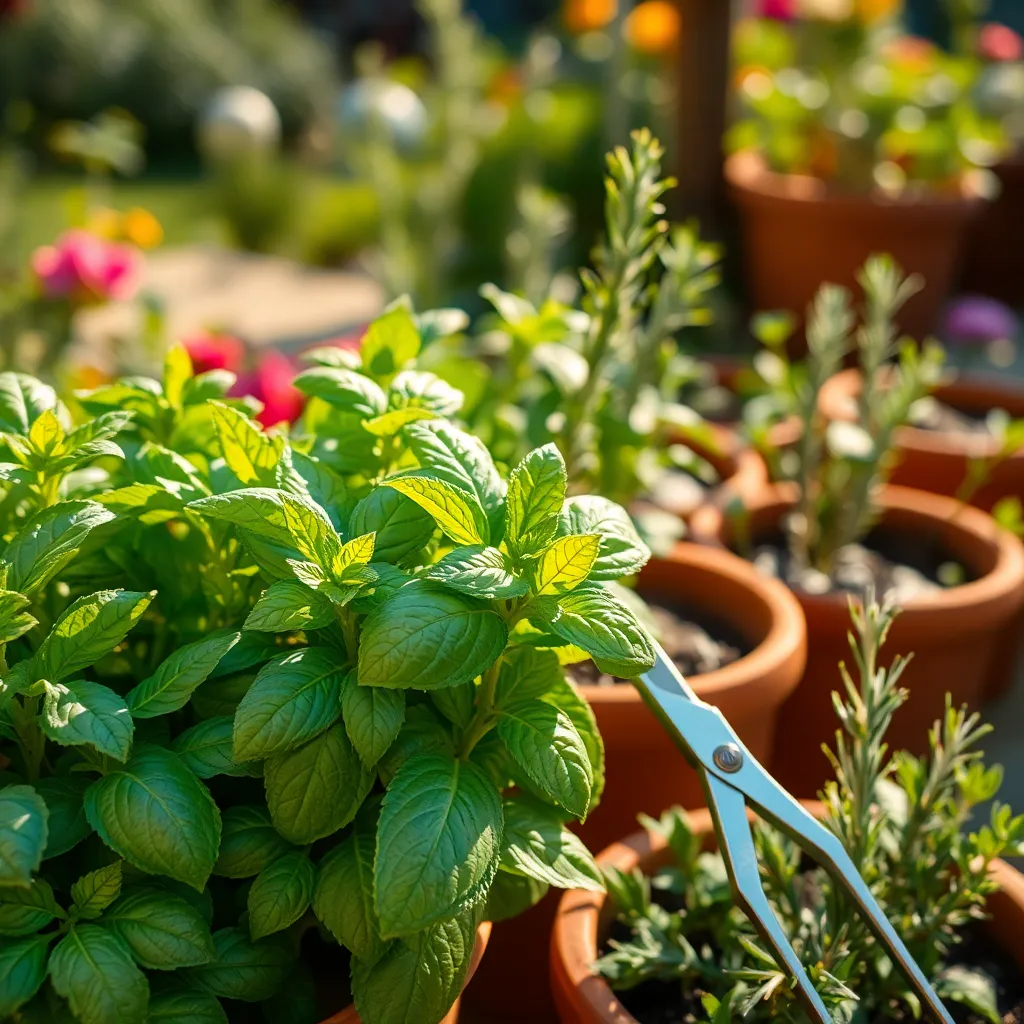
When selecting herb stems for harvest, it’s crucial to choose those that are healthy and robust. Look for stems that are vibrant in color and free from any signs of disease or insect damage. This ensures the plant will continue to thrive after cutting.
Focus on harvesting from different sections of the plant to maintain its shape and health. Avoid taking more than one-third of the plant at a time to prevent stressing the plant and ensure continuous growth. This strategy promotes bushier growth and a more abundant yield.
For beginners, it’s helpful to start with soft, non-woody stems, as they are generally the most tender and flavorful. More experienced gardeners might explore using mature stems, which can offer more robust flavors but require careful handling to avoid damaging the plant. These mature stems are often great for drying and long-term storage.
To maintain plant health, use sterilized scissors or pruning shears when cutting stems. This minimizes the risk of introducing diseases to the plant. Remember to make clean cuts just above a leaf node or pair of leaves, encouraging new growth from that point.
Use Clean, Sharp Scissors
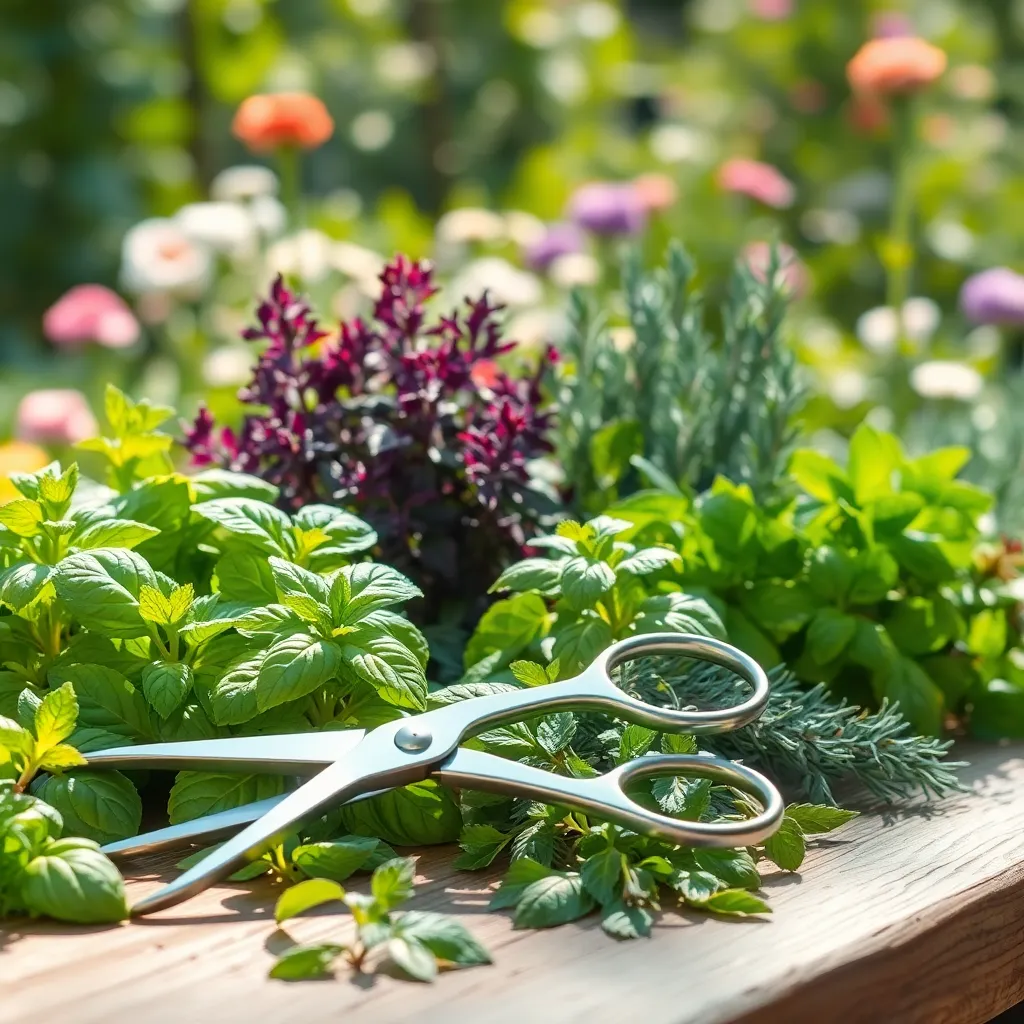
Using clean, sharp scissors is essential when harvesting herbs, as it helps prevent damage to the plant. Dull or dirty tools can crush stems and introduce diseases, which can hinder the plant’s ability to regrow.
Always disinfect your scissors before each use by wiping them with rubbing alcohol or a diluted bleach solution. This simple step minimizes the risk of transferring any pathogens between plants, ensuring that your herb garden remains healthy and productive.
Investing in a quality pair of gardening scissors can make a significant difference in your harvesting process. Sharp blades allow for precise cuts, reducing stress on the plant and promoting quicker recovery and new growth.
For those who are more experienced, consider dedicating a specific pair of scissors for harvesting herbs only. This practice helps maintain the sharpness of the blades and keeps them free from other residues that could affect your herbs.
After each use, clean your scissors thoroughly and store them in a dry place to prevent rusting. Regular maintenance of your tools not only extends their lifespan but also ensures that you’re always ready for your next harvest.
Trim Just Above Leaf Node
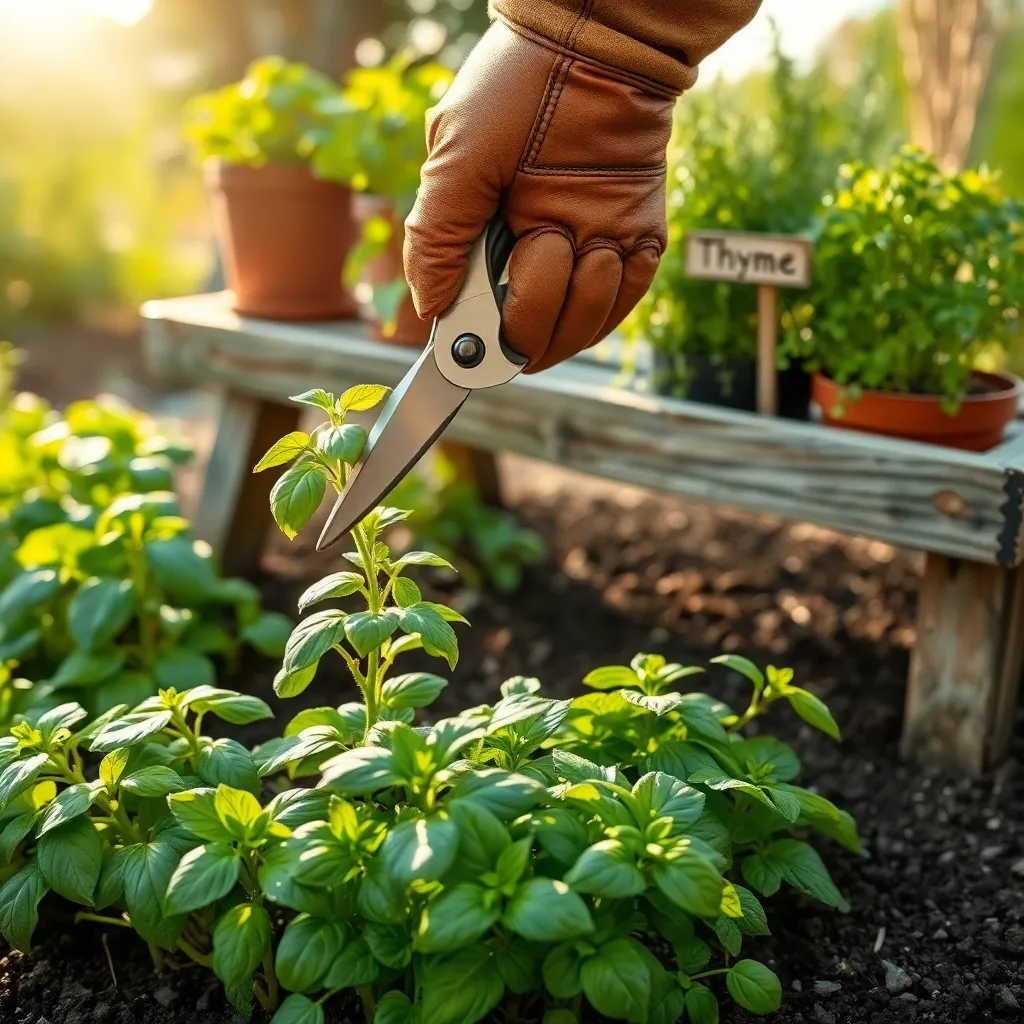
When harvesting herbs, it’s crucial to trim just above a leaf node to encourage healthy growth. A leaf node is the part of the plant where leaves emerge from the stem, and cutting here stimulates new shoots.
By cutting above a node, you ensure the plant spends energy on producing new leaves rather than repairing damage. This method is particularly effective for herbs like basil and mint, which thrive with frequent trimming.
For beginners, identifying a leaf node might seem tricky, but it’s simply the small swelling on the stem where leaves or branches develop. As you gain confidence, you can experiment with cutting different distances from nodes to see what works best for each herb.
Experienced gardeners might trim a little closer to the node to encourage bushier growth. This technique can also help in managing the size and shape of your herb plants.
Encourage Regrowth with Care
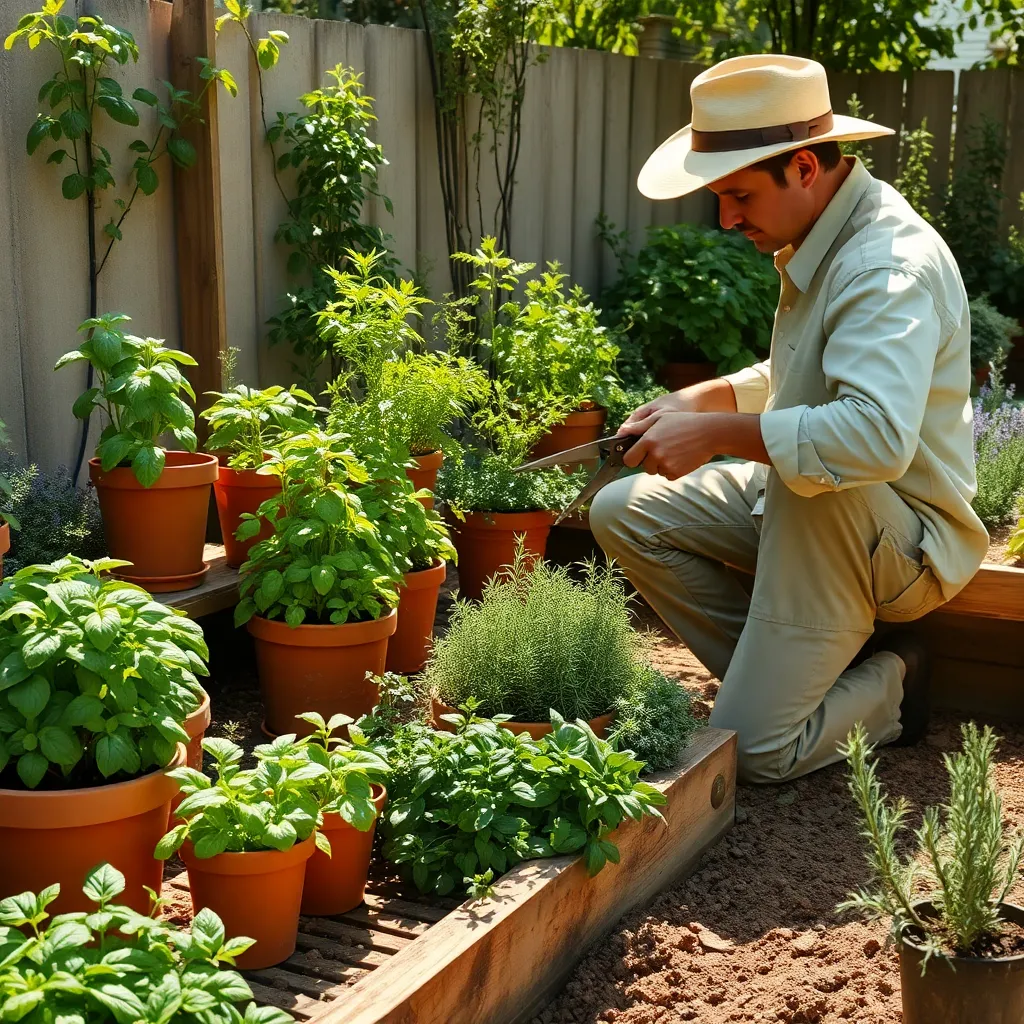
To encourage regrowth, it’s essential to choose the right time of day to harvest your herbs. Harvesting in the morning, when the essential oils are most concentrated, boosts regrowth potential and ensures a more flavorful yield.
Ensure you use clean, sharp scissors or pruning shears to prevent damage to the plant. Clean cuts minimize stress on the plant and reduce the risk of disease, promoting healthier and more vigorous regrowth.
After harvesting, it’s crucial to provide your herbs with the right nutrients to support new growth. Consider enriching your soil with organic compost or a balanced liquid fertilizer, especially if you’re harvesting frequently, to replenish nutrients and maintain soil health.
Regular watering is key, but be cautious not to overwater, as this can lead to root rot. Aim to keep the soil consistently moist but not soggy, and allow the top inch of soil to dry out slightly between waterings to promote robust root development.
For those with a bit more experience, try practicing succession planting to ensure a continuous supply of fresh herbs. By staggering your planting times, you can maintain a steady cycle of growth and harvest, keeping your herb garden productive year-round.
Conclusion: Growing Success with These Plants
In navigating the art of herbal care, we’ve uncovered five key relationship concepts that beautifully parallel nurturing any connection. First, we learned the importance of gentle harvesting, emphasizing the power of mindful interaction. Next, the practice of consistent care reminds us that regular, thoughtful engagement strengthens bonds. Recognizing the signs of a plant’s readiness to be pruned teaches us to respect personal growth and timing. The fourth lesson, embracing diversity in herbs, mirrors the richness that diversity brings to relationships. Lastly, sustaining a balanced ecosystem reflects the harmony needed to maintain healthy, thriving relationships.
As your immediate next step, start by applying these principles to a relationship in your life—be it with a partner, friend, or family member—and observe the positive impacts of gentle, consistent care. To ensure these insights remain at your fingertips, bookmark this article and revisit it as you continue nurturing your relationships.
Remember, success in relationships, much like in gardening, is a journey of ongoing learning and adaptation. By saving and reflecting on these insights, you’re investing in a future where your relationships can flourish, rooted in understanding and mutual respect. Take action today, and watch your connections thrive!

